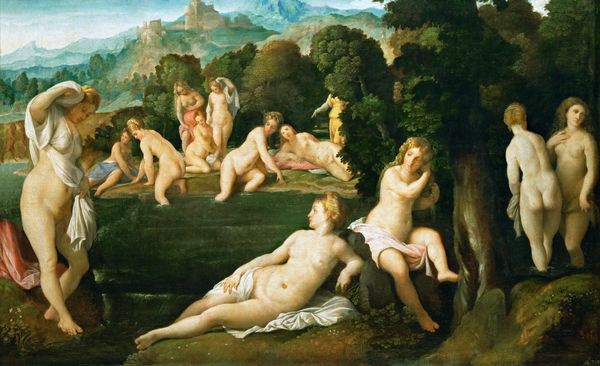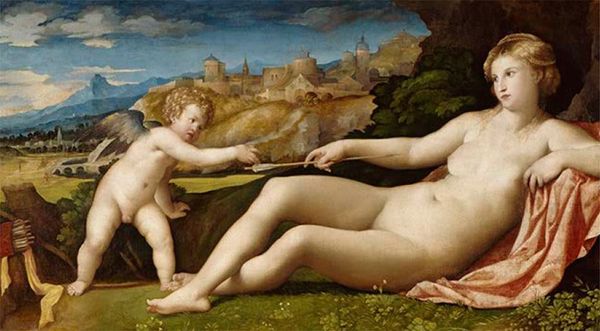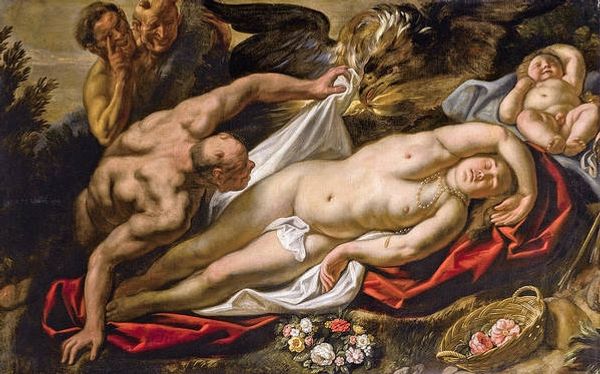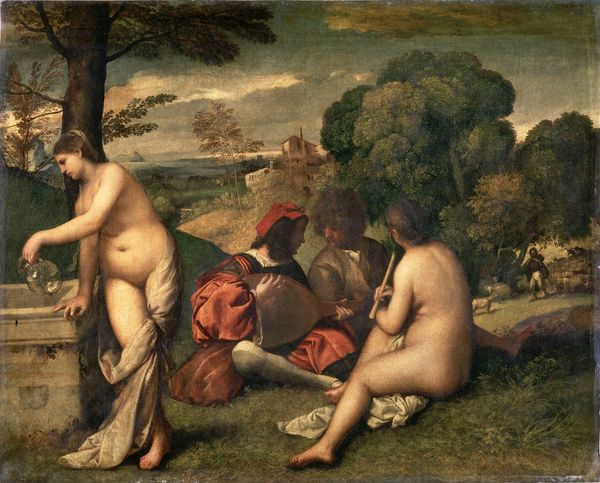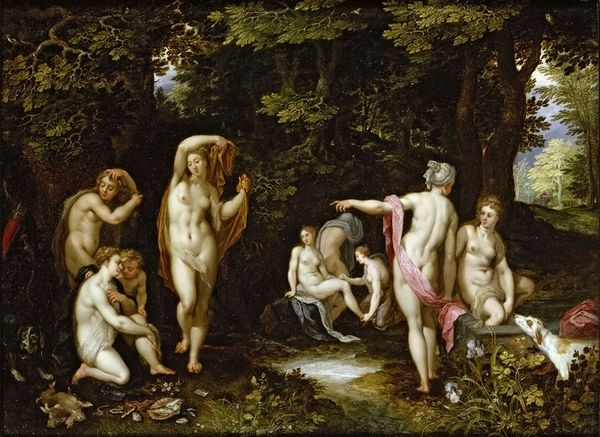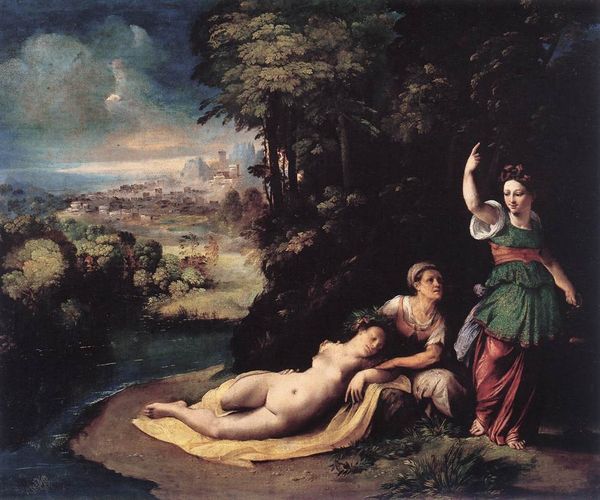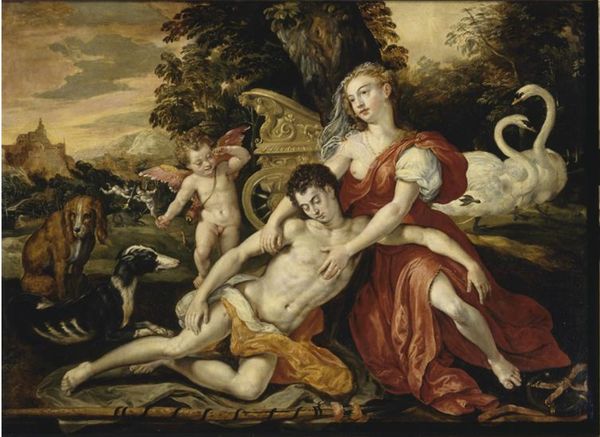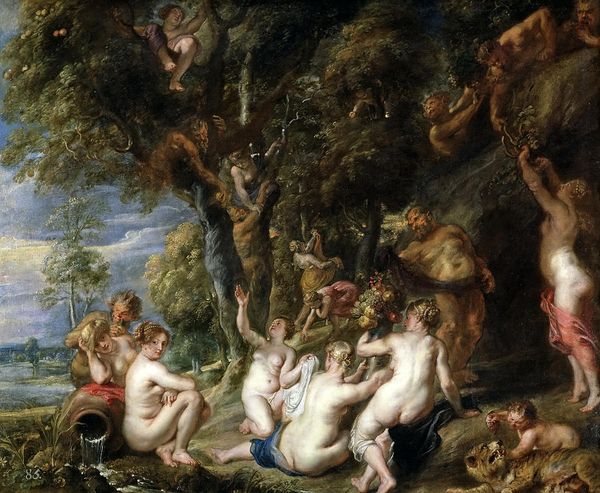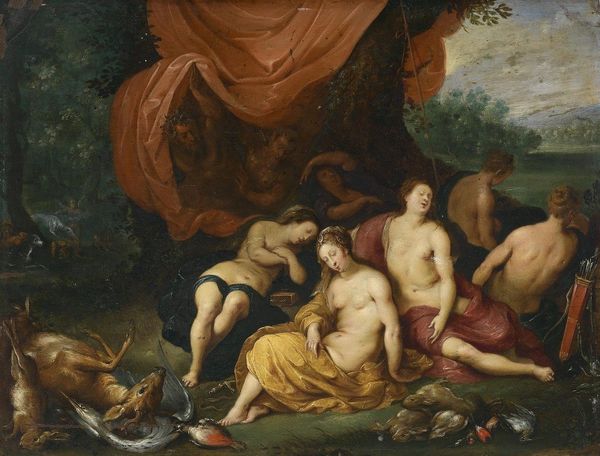
oil-paint
#
portrait
#
allegory
#
baroque
#
oil-paint
#
figuration
#
11_renaissance
#
oil painting
#
roman-mythology
#
cupid
#
mythology
#
nude
Dimensions: 328 x 190 cm
Copyright: Public domain
Curator: Look at the almost dreamlike quality of Annibale Carracci’s oil on canvas, “Sleeping Venus,” dating back to 1602. You can find this at the Musée Condé in France. What are your first impressions? Editor: Immediately, the sheer number of cherubs grabs me. They’re everywhere, and while Venus is obviously the central figure, they almost seem to overwhelm her. What's with the abundance of baby angels? Curator: These putti or cherubs are common in Renaissance and Baroque art, often associated with Venus, the goddess of love and beauty. Consider this artwork within the broader context of Italian art at the turn of the 17th century. It's part of the High Baroque style. This style was strongly supported by institutions keen on using art to project power and sensuality. The playful nature here also points to themes of abundance, and maybe a hint of eroticism in plain sight. Editor: Eroticism is right. While technically an allegorical painting of a goddess, the work centers around the idealized nude female form, positioned for the male gaze. And yet, there’s also this contrast between her peaceful slumber and all the activity around her. There’s an undeniable objectification happening here, yet within it, there's the tension between innocence, suggested by the cherubs, and knowing sensuality. How complicit was Carracci? Was he being playful, provocative, or simply fulfilling a commission? Curator: I think the art market of the period offers one answer. Remember, wealthy patrons often dictated the subject matter and the overall tone of a work. "Sleeping Venus," while a celebration of beauty, reflects the dynamics of power in artistic creation and consumption, it shows not just beauty but the system of art in society. Editor: Ultimately, viewing this piece critically opens up important discussions about gender, representation, and the historical contexts that have shaped our understanding and appreciation of beauty in art. Thanks for your insights. Curator: Likewise! Thinking through this painting highlights the constant negotiation of art's social role in a time of change, revealing what has persisted across the ages.
Comments
No comments
Be the first to comment and join the conversation on the ultimate creative platform.
